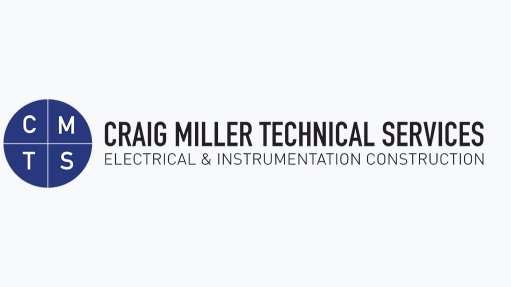Fight, flight, freeze or fawn
You might be more familiar with American physiologist Walter Bradford Cannon’s flight-or-fight response, which describes a physiological reaction to a perceived harmful event, attack or threat to survival. The ‘alarm reaction’ is the first stage of the General Adaptation Syndrome that regulates stress responses.The signs of the second stage, the ‘resistance stage’, include poor concentration, irritability and frustration. The signs of the third stage, the ‘exhaustion stage’, include decreased stress tolerance, fatigue, anxiety, depression and burnout.
That was in the 1920s. But things are a bit more complicated, for now we have the fight-or-flight-or-freeze-or fawn response. To ‘fight’, you will have to confront the threat aggressively, while ‘flight’ implies you have to run from the threat. ‘Freezing’ takes the least effort – you merely have to render yourself motionless. ‘Fawn’ entails complying with that which wants to attack you.
So, what will be your response to the impending economic challenges facing South Africa? The one indisputable fact is that South Africa is awash with bad news. On April 29, Standard & Poor’s (S&P) downgraded South Africa’s long-term foreign currency rating to three notches below investment grade. As a consequence, South Africa’s cost of servicing public debt is expected to increase to about 6.5% of gross domestic product (GDP) by 2023.
The National Treasury said it was “disappointed by S&P’s decision”, adding: “According to S&P, the downgrade is a result of Covid-19-related pressures that will have significant adverse implications for South Africa’s already deficient growth and fiscal outcomes. The stable outlook reflects the balance between pressures related to very low GDP growth and high fiscal deficits against the country’s deep financial markets and monetary flexibility.”
An interesting observation: when I spell-checked this piece, the phrase ‘very low’ was questioned, with suggestions for its replacement being ‘exceptionally low’, ‘extremely low’, ‘incredibly low,’ which, come to think of it, are quite apt.
The National Treasury concludes its statement thus: “Now, more than ever, structural reforms need to be urgently implemented in order to get the economy moving in the right direction. Tough decisions have to be made and collaboration between government, business, labour and civil society remains vital in order to contain the spread of Covid-19 and ensure sustainable economic recovery.”
Clearly, Covid-19 is being used as the economic bogeyman, but this is a label it does not deserve. While the economic destruction that Covid-19 is set to cause should not be underestimated, it will be wrong to make it a scapegoat. The South African economy was on a downward trajectory long before Covid-19 made its appearance. The National Treasury is correct in saying that “now, more than ever, structural reforms need to be urgently implemented”. But this is far from new. Consider this: “Government has conceded that, more than ever before, there’s now a pressing need for structural change in the South African economy.” This was reported on www.sanews.gov.za on May 25, 2016 (nearly four years ago) and attributed to the then Trade and Industry Minister, Dr Rob Davies. He was speaking at the launch of the eighth iteration of the Industrial Policy Action Plan, or IPAP.
‘Structural change’ of the South African economy is by no means new in concept. In 2006, Dani Rodrik, of Harvard University, in the US, wrote an article titled ‘Understanding South Africa’s Economic Puzzles’, in which he made numerous references to ‘structural change’ of the South African economy. The obvious question is: When will government effect structural change to the economy, and not merely repeatedly converse about it?
Flight, or freeze, or fawn is simply no option for South Africa. There is but one option – to fight.
Article Enquiry
Email Article
Save Article
Feedback
To advertise email advertising@creamermedia.co.za or click here
Comments
Press Office
Announcements
What's On
Subscribe to improve your user experience...
Option 1 (equivalent of R125 a month):
Receive a weekly copy of Creamer Media's Engineering News & Mining Weekly magazine
(print copy for those in South Africa and e-magazine for those outside of South Africa)
Receive daily email newsletters
Access to full search results
Access archive of magazine back copies
Access to Projects in Progress
Access to ONE Research Report of your choice in PDF format
Option 2 (equivalent of R375 a month):
All benefits from Option 1
PLUS
Access to Creamer Media's Research Channel Africa for ALL Research Reports, in PDF format, on various industrial and mining sectors
including Electricity; Water; Energy Transition; Hydrogen; Roads, Rail and Ports; Coal; Gold; Platinum; Battery Metals; etc.
Already a subscriber?
Forgotten your password?
Receive weekly copy of Creamer Media's Engineering News & Mining Weekly magazine (print copy for those in South Africa and e-magazine for those outside of South Africa)
➕
Recieve daily email newsletters
➕
Access to full search results
➕
Access archive of magazine back copies
➕
Access to Projects in Progress
➕
Access to ONE Research Report of your choice in PDF format
RESEARCH CHANNEL AFRICA
R4500 (equivalent of R375 a month)
SUBSCRIBEAll benefits from Option 1
➕
Access to Creamer Media's Research Channel Africa for ALL Research Reports on various industrial and mining sectors, in PDF format, including on:
Electricity
➕
Water
➕
Energy Transition
➕
Hydrogen
➕
Roads, Rail and Ports
➕
Coal
➕
Gold
➕
Platinum
➕
Battery Metals
➕
etc.
Receive all benefits from Option 1 or Option 2 delivered to numerous people at your company
➕
Multiple User names and Passwords for simultaneous log-ins
➕
Intranet integration access to all in your organisation














